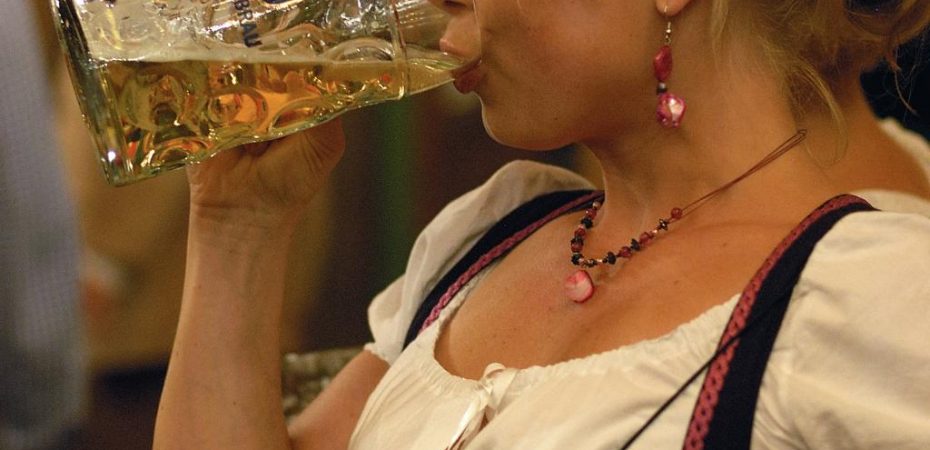O n the 6th December 2012 Sara Barton stepped up to accept the British Guild of Beer Writers’ award for Brewer of the Year. Barton, who founded her brewery in 1998, is the first woman in the history of the 20-year-old competition to scoop the coveted award. She is also one of an increasing number of women pushing her way back to the industry coal face.
For all of our living memory brewing has been a man’s game. It’s a product made by men, for men. It’s the land of beards and cardigans, the domain of the rugby lad, and the drink of smoke filled country pubs in a sea of flat caps. But it wasn’t always this way. Beer was once a drink for the family, the liquid bread of the table. It was clean, safe drinking water and packed full of nutritional goodness. The men drank it. The women drank it. Even the children drank it.
Women didn’t just drink it, though; for much of beer’s 10,000 year life they also brewed it. The liquid bread was such an important part of the daily diet that it was included with the rest of the domestic duties. The Mesopotamians and Sumatrans valued the skill of brewsters so highly they banned men from putting on their brewing boots. It was only when brewing shifted into the professional sphere that women began to drop out.
Ultimately, when beer stopped being part of the meal and started being an industry where there was money to be made, the people without any cash got kicked out. Unfortunately, by the 19th century the industry had been completely taken over by men and brewsters had all but disappeared from breweries across the world.
Thankfully, though, things are changing. Women are returning to an industry that was once entirely theirs and they are bringing a lot of fresh ideas with them.
For years the world’s largest beer market, the U.S., has been dominated by a few giant companies all producing the same easy-drinking pale lager. It’s got to a place where 90% of the US market is owned by two companies. Yes, you read that right, just two. Between them Anheuser-Busch InBev and MillerCoors own pretty much all of the beer in North America.
Back before industrialization, women were the original brewers called “alewives.” Over the past decade more and more women have become involved in craft beer, both as drinkers and in the industry as brewers, sales reps, etc., so it seems more like an appropriate return to tradition.
For the past century people have been happy with that, and if the people are happy drinking it, the breweries are happy making it. So the industry has sat on its heels, pumping out keg after keg of the same beer with slightly different labels. Not exactly conducive to a Beer Renaissance.
That said people do seem to be getting bored, or maybe they are just noticing the options again. New breweries boasting new flavours are popping up all over the place and at the head of many breweries stand women.
According to Melissa Cole, author of Let Me Tell You About Beer, having women wait until now to get involved, might actually be a good thing: “Men can be tied to more traditional ways of doing things,” she says. “Whereas [women] think outside the boring, brown, bitter box. We’re not forever doing down the hoppier, stronger route.” Take a quick look at the line up at Barton’s Brewsters and it’s not a mystery why she scooped the award. Her Hophead ale bursts with hops, berries, grapefruit, and grass, while the Marquis bitter oozes a malty caramel taste wrapped up under layers of citrus, nuts, biscuits, and coffee. Unsurprisingly, both have been tipped for this year’s Champion Beer of Britain.
This Article is from Beers of the World Issue 29, and the rest can be found here.

